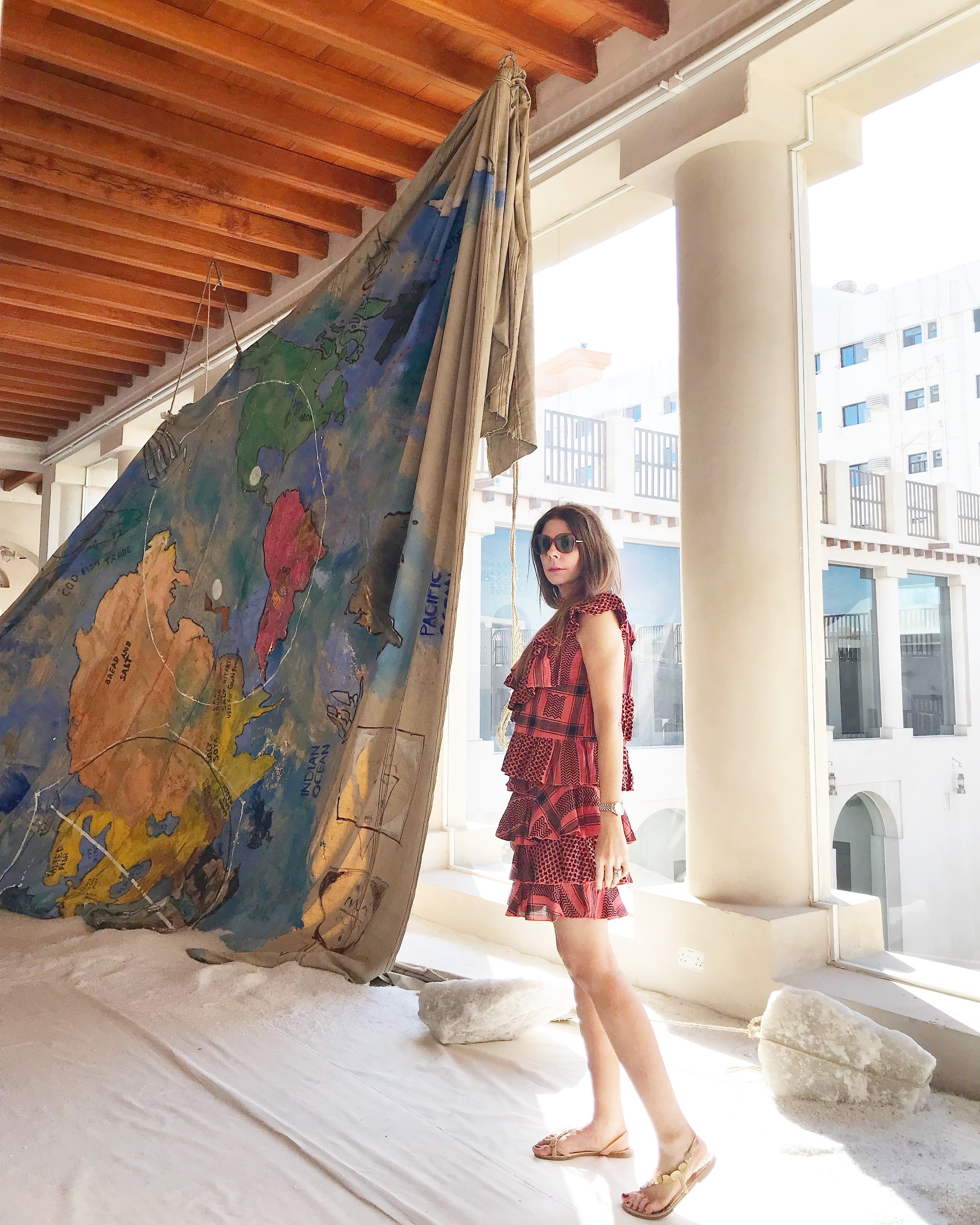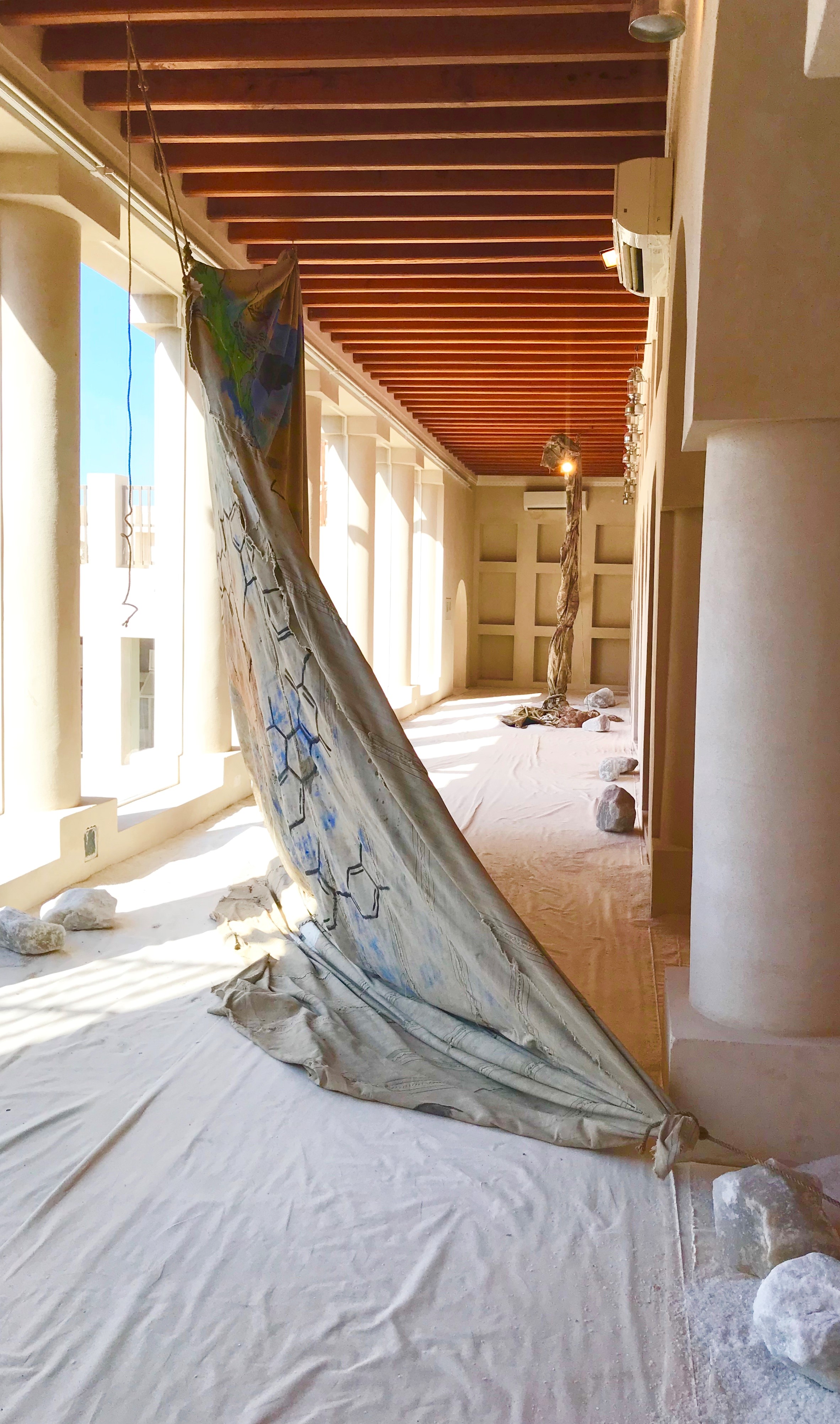Dubai Art Week: Beyond One Emirate
Globalized, multicultural, opulent, excessive, overblown. These are just some of the terms that have been used to describe Dubai and its phenomenal ascent as one of the most important business and tourism destinations around the world in the past decade. And because it’s the fastest growing city in the Middle East, it can't fall behind in becoming a more relevant part of the international art scene. Such fête, however difficult, is becoming a reality with the help of two other United Arab Emirates: Abu Dhabi and Sharjah.
Art Week in Dubai, which is in its 12th edition, runs during the third week of March and in the relentless and ever-growing global circuit of art fairs, biennials and mega-museum openings, it competes tightly for attention with Art Basel Hong Kong which takes place a week after. However, that’s not a deterrent for Art Dubai, the main fair that brings hundreds of collectors, curators, art enthusiasts and participant galleries from all over the world.
Anna Boghiguian's retrospective at the Sharjah Art Foundation
Being in Dubai for the first time allowed me to experience it with fresh eyes and an honest sense of wonderment. There, in the middle of the Arabian Desert, covered in ochre shades and that warm dusty glow so characteristic of the Middle East, a big metropolis built in the past 50 years is glitzy and glamorous, with record-breaking skyscrapers, giant hotel complexes along manmade beaches and artificial islands that co-mingle with a diverse population in an effervescent environment.
My first stop was the Sharjah Art Foundation. A 45-minute drive from Dubai, Sharjah seems the sleepiest and most authentic of the three Emirates I visited. Created by Hoor Al Qasimi, daughter of Sultan bin Muhammad Al-Qasimi, current ruler of Sharjah, the foundation supports and promotes contemporary art and artists from the region through a variety of initiatives ranging from exhibitions to publications and even the Sharjah Biennial. The foundation’s galleries that host temporary exhibitions are split into several buildings, the main of which is located in Arts Square inside a restored, simple, white cement, two-story Arab architecture building with a central courtyard and floor-to-ceiling glass windows and skylights. In that building I experienced one of the most special shows I have ever seen in my life: Egyptian multimedia artist Anna Boghiguian’s retrospective that took over the entire building and included paintings, works on paper, sound, a recreation of the artist’s own studio and an immersive installation where the floors were covered in sand and salt, sails hung from the ceiling, and wooden boat parts and drawings on the walls contributed to the magical environment.
Timo Nasseri Installation at the Maraya Art Centre
Also nearby in Sharjah, the Maraya Art Centre, a not-for-profit organization that promotes young artists from all over the world, offered a site-specific installation by Iranian-German artist Timo Nasseri. He created a dark, mysterious exhibition whose pièce de résistance was a mirrored room where each part was perfectly cut and put together in geometric shapes resembling middle eastern mosaic stars confronting infinity and fragmentation at the same time.
Back in Dubai, people continued to arrive to the Jumeirah Mina A’ Salam convention area to attend the fair’s VIP preview of the modern section, which is elegant and restrained with only 16 galleries containing historical artworks and 20th century artists mostly from Arab countries. My favorite discovery was deceased Egyptian painter Samir Rafi, whose works from the 1960s and 70s were exhibited by Cairo’s Ubuntu Art Gallery and felt fresh and relevant as if they could have been made today.
A paintig by Samir Raffi at Art Dubai Modern
The main fair, which opened the next day, presented 105 contemporary galleries from 48 countries. The beauty of this fair is that while it is international and full of big players such as New York’s Marianne Boesky and Paris’s Templon Gallery, the majority of the galleries are from places as remote as Karachi, Jeddah and Ramallah, opening an entire new world of emerging and mid-career artists to collectors who would probably never get to go to any of those cities. I was also pleasantly surprised by the “Residents” section, a new initiative of Art Dubai that invites international galleries to nominate an artist to participate in a four-to-eight week residency in the Emirates, encouraging them to immerse themselves in the art scene and combine their own practice with their surroundings. The resulting works are then displayed for sale in solo presentations.
Solo booth by Iranian artist Farshad Farzankia presented by Galerie Kornfeld after his residency in the United Arab Emirates
Dubai also has its own art district inside the industrial area Al Quoz. Alongside Alserkal Avenue, several warehouses next to each other, some of them with multiple levels and ceilings as high as 25 feet, host a variety of sophisticated galleries with strong art programs. For example, Carbon 12 Gallery represents young international luminaries, such as Iran-born Sara Rahbar who has an upcoming solo show at the Dallas Contemporary in April 2018, or nearby The Third Line who, among many others, works with world-renowned Egyptian multimedia artist Youssef Nabil. Lawrie Shabibi, Isabelle van den Enyde, Leila Heller, 1x1 Art Gallery, Green Art Gallery, and Ayyam Gallery are also close and very much worth exploring.
The Louvre Abu Dhabi by Jean Nouvel
Perhaps the greatest excitement of the trip was the much anticipated visit to the Louvre Abu Dhabi, which opened four months ago. Abu Dhabi is 90 minutes away from Dubai, and where it lacks the vibrancy of Dubai it is making up for it with culture. The museum is located in Saadiyat Island, which is a flagship project of the government of Abu Dhabi with "a vision to become an art destination that bridges global cultures" (these words were earnestly repeated several times by the museum’s staff and by Manuel Rabate, its director), and the island will also be the home for the Guggenheim Abu Dhabi and the Zayed National Museum.
Jordanian twin heads sharing a body from 6500 BC. Their faces have been compared to Giacometti's works. Only 27 centuries apart.
The Louvre in Paris licensed the use of its name for 30 years and signed an agreement that allows the Abu Dhabi institution to get loans not only from the Louvre collection but also from 12 other French museums, such as the Centre Pompidou and the Musee d’Orsay, during the next ten years. The goal is to allow for Louvre Abu Dhabi to build its own collection, and judging by the $450 million spent on Leonardo Da Vinci’s “Salvator Mundi” last fall at Christie’s that will be shown at the museum at the end of this year, they are definitely serious about doing so. The building itself, designed by Jean Nouvel, is a sensational structure whose outdoor dome alone was designed using more than 7,000 aluminum stars juxtaposed in eight layers, inspired in part by the Arab star and in part by the overlapping palm trees used as roofing in the Middle East.
Ai Weiwei's "Fountain of Light" commissioned by the Louvre Abu Dhabi for the Globalization section of the museum, which is the last one before reaching the terraces and outdoor spaces.
The museum is organized and curated in a chronological way, so it’s not building upon sections divided by geographic regions or civilizations and it does show Western and non-Western works side-by-side with an attempt to prove a point of shared humanity and that all cultures are equally relevant. The exhibitions on “Chapter 1," for example, include a 6500 BC sculpture of Jordanian twin heads sharing a body and displayed nearby a 2400 BC praying female figure sculpture from Greece. From there the 23 brightly lit galleries progress all the way until finishing in a large contemporary space which exhibits works from artists both acquired, loaned and commissioned by the museum, such as the monumental “Fountain of Light” by Ai Weiwei, a take on the Tower of Babel and the Tailin Tower and fabricated using thousands of sparkling crystals. The Louvre Abu Dhabi feels like a crash course in art history, showing in real time many iconic and extraordinary art pieces spanning 26 centuries.
I admit I was impressed by the Emirates. After all the art destinations I’ve visited around the world, I think that in a very strange way, the efforts and initiatives of the UAE feel more open-minded than those of many other countries where there’s a combination of jadedness, attitude and art fatigue. Where everywhere else can feel a bit cynical, these cities are reinventing art experiences from museums to foundations in a refreshing, albeit over-the-top, way.










